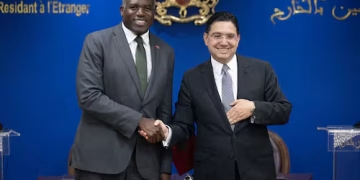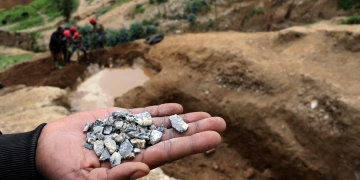Kenya’s government has unveiled plans to establish two new funds—a sovereign wealth fund (SWF) and an infrastructure fund—designed to channel domestic resources into strategic sectors while reducing dependence on debt. President William Ruto announced the initiative in a speech meant to reassure investors and manage Kenya’s mounting debt burden.
The funds will be capitalized through state asset sales enabled by a newly passed privatization law. The government is expected to begin with a share offer of the Kenya Pipeline Company, which could generate approximately 130 billion Kenyan shillings (≈ $1.01 billion) for the funds. The infrastructure fund will prioritize sectors such as agriculture (especially export crops) and electricity generation, aligning with Kenya’s vision to industrialize and expand manufacturing.
The rationale is that Kenya’s debt-to-revenue ratio has become unsustainable owing to overinvestment in infrastructure over the past decade. Rather than taking on more external debt, the government seeks to recycle existing assets and mobilize capital through equity and privatization.
President Ruto emphasized the long-term benefits of the funds for future generations. He argued that putting assets to work in revenue-generating sectors would help reduce borrowing pressure and foster sustainable growth. However, he did not provide a definitive timetable for when the funds would become operational.
The infrastructure fund’s agenda includes boosting electricity generation capacity, which is currently constrained. Kenya now generates about 2,300 megawatts, but its industrial goals require at least 10,000 MW. To meet this, funds could target new power plants (including renewables), transmission lines, and grid expansion. Similarly, the fund aims to support agricultural exports by improving irrigation, storage, and logistics infrastructure.
In tandem, the sovereign wealth fund will function as a long-term investment vehicle, possibly holding equity in profitable enterprises or managing surplus revenues. It may act as a stabilization fund or a future generation fund, though details are still sparse. The government aims to avoid burdensome debt financing and instead leverage public and private capital.
Critics caution that asset sales need to be transparent, and the governance and management of these funds must adhere to high standards to prevent misallocation or political interference. Without careful design, the funds could replicate problems seen elsewhere: misgovernance, capture by elites, and suboptimal investments.
The announcement comes at a time when Kenya’s broader growth outlook remains modestly positive. In recent years, Kenya’s economy has been projected to grow around 5 %–6 %. A Deloitte East Africa outlook estimates an average of 5.8 % annual growth between 2025 and 2029, supported by digital transformation, regional integration, and structural reforms.
Still, Kenya faces significant challenges: high public debt, constrained fiscal space, and a need for more efficient public investment. The creation of these funds is a strategic pivot, attempting to shift from debt-driven growth to revenue-driven investment.
The creation of sovereign wealth and infrastructure funds in Kenya opens a range of possible outcomes, risks, and strategic directions.
1. Debt Relief & Fiscal Sustainability
By relying on capitalization via asset sales rather than new borrowing, Kenya aims to reduce pressure on debt metrics. If successful, the funds could help lower the need for future debt issuance, improve credit ratings, and ease investor concerns. Over time, returns from the sovereign wealth fund might also provide a revenue buffer. However, the success depends heavily on the value of assets sold and the returns generated by the investments.
2. Sectoral Prioritization & Impact
Redirecting capital into infrastructure and agriculture could yield high social and economic returns. For example, bolstering electricity generation and transmission can unlock industrialization, manufacturing, and value addition. Improvements in agricultural infrastructure could boost productivity, reduce post-harvest losses, and facilitate export orientation. With the right project selection, multiplier effects could stimulate private sector activity and job creation.
But prioritization is key. Funds must target projects that yield economic returns and not just improve optics. Rigorous project appraisal, risk assessment, and performance monitoring will be essential to avoid wasteful or politically motivated investments.
3. Governance Structure & Transparency
The governance of the funds will be critical to their success or failure. Strong, independent boards, clear mandates, rigorous audits, and public disclosure will be needed to prevent misallocation or corruption. In many countries, sovereign wealth funds have faltered due to weak oversight or political capture. Kenya must design robust checks and balances from the start to ensure confidence among investors and citizens.
4. Privatization Risks & Public Sentiment
While asset sales help fund capitalization, they come with risks. Selling state assets might face public backlash, particularly if they are viewed as national treasures or strategic entities (like pipelines, ports, or utilities). Pricing, timing, and transparency of sales will matter. Undervaluation or opaque deals could spark political controversy or legal challenges.
Moreover, investors may demand governance guarantees or performance assurances, which could impose future liabilities. The government must balance urgency of sales with fairness, competitiveness, and public interest.
5. Investment Strategy & Risk Management
The sovereign wealth fund and infrastructure fund will need diversified investment strategies. Overconcentration in particular sectors or geographic regions may pose risk. Given Kenya’s developmental priorities, domestic investments may dominate, but some exposure to regional or even global assets could help with risk diversification.
Risk management frameworks—including scenario stress tests, liquidity planning, and exit strategies—will be vital. The funds must avoid locking resources in illiquid or underperforming assets, especially in the early years when returns will matter most to build credibility.
6. Scaling, Phasing & Management Capacity
The government will need to phase in the funds gradually. Starting with the Kenya Pipeline Company share sale is prudent, but scaling up to broader asset pools will take time. Building capable fund management teams, hiring technical experts, and ensuring alignment with national development plans will be essential. Kenya must avoid overestimating its capacity to manage large sovereign funds from day one.
In addition, coordination with existing public investment agencies, infrastructure planning units, and sector ministries will be required. The funds should not operate in isolation but integrate with national development strategies, budgeting cycles, and public procurement frameworks.
Conclusion & Outlook
Kenya’s plan to establish a sovereign wealth fund and infrastructure fund signals a shift in development financing strategy. Rather than relying heavily on external debt, Kenya seeks to harness its assets and channel capital into high-impact sectors. If executed well, the initiative could relieve debt strain, support infrastructure expansion, and foster inclusive growth.
However, success will depend on transparent governance, prudent project selection, capacity building, and the judicious timing of privatization. The road ahead is full of challenges, but the opportunity for structural change in Kenya’s financing model is real—if the government can match ambition with execution.








